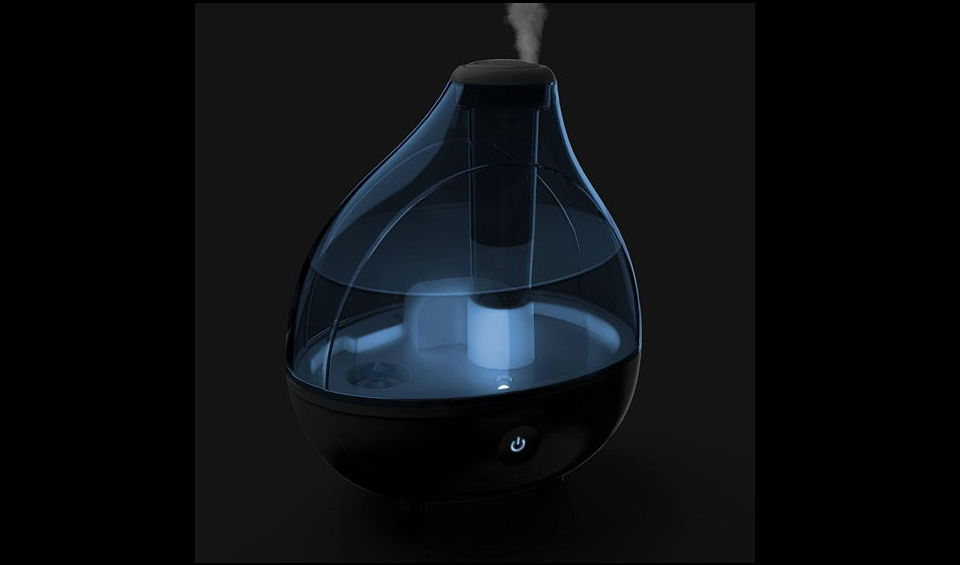As an Amazon affiliate, we earn a commision from qualifying purchases.
Ultrasonic humidifier dangers…the untold truth.
If you’re considering purchasing something, it’s always good to be aware of its potential benefits as well as the dangers associated with it.
Here we highlight the various potential ultrasonic humidifier dangers to help you make an informed decision.
But first, here is a quick look at what an ultrasonic humidifier is for the benefit of first-timers…
What is an Ultrasonic humidifier?
An Ultrasonic humidifier is nothing else but a humidifying device that adds moisture to the air.
The key difference between this humidifier and other types is that it employs sound vibrations to create and disperse ultra-fine water mist into the air.
Users like it because it’s immensely quiet plus it’s filter-less (that saves you money, right?).
But it has its weaknesses and can be harmful to human health and the entire surrounding if not well monitored.
Question is, how dangerous is an ultrasonic humidifier?
Keep reading to get the answers…
Ultrasonic humidifier dangers – the real risks brought about by these fast-selling home companions
Below we explain the commonest risks of running this class of humidifiers and what you can do to reduce the danger.
1. You could be breathing some bacteria
Ultrasonic humidifiers do not boil the water and produce the mist via vibration technology (a metal diaphragm or a similar element vibrates at an exceedingly high frequency propelling water droplets to your space).
For this reason, danger is present that impurities within the device could be discharged to your rooms along with the generated mist.
In comparison, warm mist models such as evaporative humidifiers heat the water first, killing germs before expelling the bacteria-free steam into the room.
What to do: Disinfecting the humidifier on a regular basis will go a long way in keeping the microorganisms off the unit.
2. It can over-humidify your space
Ultrasonic humidifiers are so good at what they do that it may add more moisture to the air than necessary, exposing you to overwhelming dampness and mold growth.
We all know that this can bring an avalanche of health issues including nasal stuffiness, wheezing, coughs, etc.
Other than that, you may have issues like cracking paint and drying of the furniture in the room if the air is over-humidified.
But all is not lost and you can overcome this hazard…
All you need to do is ensure that the moisture level is optimized at all times by setting the thermostat to between 30 to 50 degrees (recommended by CDC).
Needless to say, the humidistat shuts off the humidifier when it detects enough moisture in the room.
3. Those Mineral deposits are no good
While the absence of wicks or filters to replace saves maintenance effort and operational costs, there’s no alternative mechanism provided to collect the build-up of minerals and other metal deposits forming in the reservoir.
This causes ultrasonic humidifiers to start emitting white dust that, according to one study, could cause lung injuries to your young ones.
It’s also widely believed that seniors and folks with respiratory allergies are particularly harmed by certain types of airborne pathogenic organisms.
In addition, you may not like the way the white dust appears on objects and furniture around the room.
What to do: The EPA (Environmental Protection Agency) advises that you replace tap water with de-mineralized water or any water type having lower mineral content. Check the owner’s manual for the manufacturer’s instructions on the type of water to use.
Other useful measures
- The EPA also proposes that you clean your humidifier at least every third day (or more often if need be). You don’t have to spend on those hyped up disinfectants- even warm water and plain dish soap is enough.
- You might also install demineralization cartridges if supplied or suggested by whoever made your ultrasonic humidifier although opinions differ as to the efficiency of these accessories.
- Moreover, you can add a little vinegar into the unclean water making minerals too weak to cause trouble.
It’s also worth noting that manufacturers are not sleeping and have lately invented technologies that fight the growth of mildew and mold in the water tank.
You can purchase an ultrasonic humidifier with such antibacterial powers if you’re worried about the microbial exposure.
How to stay out of trouble with ultrasonic humidifiers
Despite the worrying concerns, ultrasonic humidifiers have advantages that make them quite ideal for some situations.
For example, they’re safe to use for rooms used by pets and children because they don’t have a heating element and won’t scald them.
They are pretty good for bedrooms too- some run at below 30 dB which is conducive for good night sleep.
Here is a summary of the most fundamental things to do to ensure safe and effective use if you settle for this humidifier.
- Clean it as frequently as practically possible with the recommended products.
- Use water containing no minerals in the reservoir.
- Avoid putting inhalers or essential oils if it’s contrary to manufacturer’s instructions (unless you have no qualms replacing the device more often).
- Monitor the emergence of white dust and shut down the unit as soon as you notice some.
- Keep the interior doors open when the unit is running.
- Monitor excessive humidity using an inexpensive hygrometer (available online or at hardware stores).
Recap
An ultrasonic humidifier is very useful and a great machine to have but you must exercise care to avoid you or your dear ones becoming sick.
We recommend that you strictly adhere to the manufacturer’s instructions regarding safe use and best practices when running your ultrasonic humidifier.
You can also offset plenty of emergencies by applying common sense.
For example, you don’t want to have your baby play with it.
All the best.
MORE READING: Here are 7 Amazing Benefits of Vicks humidifier

